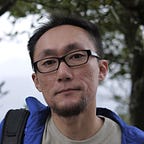Exhibition Foreword: Back to Thy Root for Sheer Happiness
中譯版請往下看,謝謝明愛社區發展服務
Exhibition 16–24/1 at the Jao Tsung-I Academy.
Virtual exhibition:
Culture Passing Down (Block F): https://my.matterport.com/show/?m=xrtx1u3KzEB
Merging into the Tradition (Block G): https://my.matterport.com/show/?m=Rp37QPfiMTR
This is exhibition is not an attempt to ‘create’ culture or ‘preserve’ heritage. The works are a part of people’s lives, given time to take root and mature.
I grew up spending much time with uncles and aunts, grandpas and grandmas on both my parents’ sides. They spoke Teochew Weh (潮州話) more than half of the time, and sometimes directly to us kids as if we understand. Without any conscious effort, we picked up enough for daily listening; especially words they rather us not use. But it was not until I heard pop songs from in Hakka (客家話), Southern Min (閩南話), Tibetian(藏言) and various other languages and dialects that I grew an affinity towards Teochew Weh. Hearing the beauty in other dialects drew me to my grandparents’ native tongue.
Culture is ‘the way we live’; living includes thinking, doing, feeling and everything. When we use the term ‘Heritage’, there is a sense that our ‘living’ was passed down to us, and a certain responsibility for the ‘living’ to live on. The key to this inheritance is that it is ‘living’.
Language evolves, so do cooking, architecture, handmade daily items, farming and fishing methods and many other things. They evolve because they are not frozen for studies and reminiscence, but because they are important to daily lives. However, as a society, we have quickly abandoned these ‘ways of living’ as soon as more convenient and attractive replacements are offered to us. But are they really replaceable?
As we find new ‘ways of living’ to be less than what they promise, we begin to reach back into our heritage. We get back in touch with our extended families, to share stories, names, recipes, piecing them together with the sight, sound and smell of our childhood. Reaching as far back as we can, we slowly realize that these ‘ways of living’ were important to our elders and ancestors not simply because of material necessities and convenience, but because they are of a wholesomeness that words such as relationship, hardship, survival, hope and identity barely describes.
Heritage is not for preservation, it is for you and me. And as such, scholars, artists, historians, government or other experts can only have a supporting role, as in this exhibition. People, as living being, are the only suitable candidate to bare the torch of heritage, to determine how we will continue to live.
May this exhibition inspire us to also live our lives.
這個展覽的重點不在於「創造」文化,也非「保育」文化遺產,而是展現人民落地生根,需時完滿熟成的生活片段。
少時很多機會跟父母祖上叔伯舅媽嬸姆相處,他們大部份時間都以潮州話交談,間中也跟我們小的淺談幾句,像是我們都能聽懂對話;也因此我們不用費勁,雖然日常不會講說,仍能聽懂潮州對話。直到後來透過音樂接觸客家話、閩南話、藏語與及其他語言方言,令我對於祖上輩的潮州口語,產生一種莫名的親切感,感受到不同方言不同語言美不勝收之處。
「文化」就是生活之道,包括如何思考、做事、感受等等,無所不包。談到「文化遺產」,必然意含著傳遞與承擔,把文化在生活中宏揚開去的責任。
語言、烹飪、建築、手工藝、農耕捕漁方法都在不斷演化,只因這些都與生活息息相關,不會一成不變或成為後人考究的明日黃花。但在現代發展裏頭,我們往往急速捨棄舊有的,接受更為利便更具吸引力的替代品。難道這些舊有的文化事物真的可以替代?
當我們有所覺醒,領悟到速食誘人的新事物的局限,迷途知返,回歸我們原生的大家庭,分享共有的故事,名字、食譜,以兒時記憶的影像、聲音及味道氣味串連重組;搜索枯腸,漸漸領會到對祖上輩來說,舊有生活方式不在物質上的好處及利便之處,而是那份整全又非各種詞彙如關係、困苦、求存、希望、身份等可以言傳之處。
文化遺產為公眾所共同擁有,學者、藝術家、史學家、政府及其他專家就像在是次展覽裏面,也都只是支援的角色。每天切實生活的人才是合適的人選,拿起文化遺產的火炬前行,決定人們可以如何繼續好好生活下去。
祝願這個展覽可以啟導我們活好每一天。
